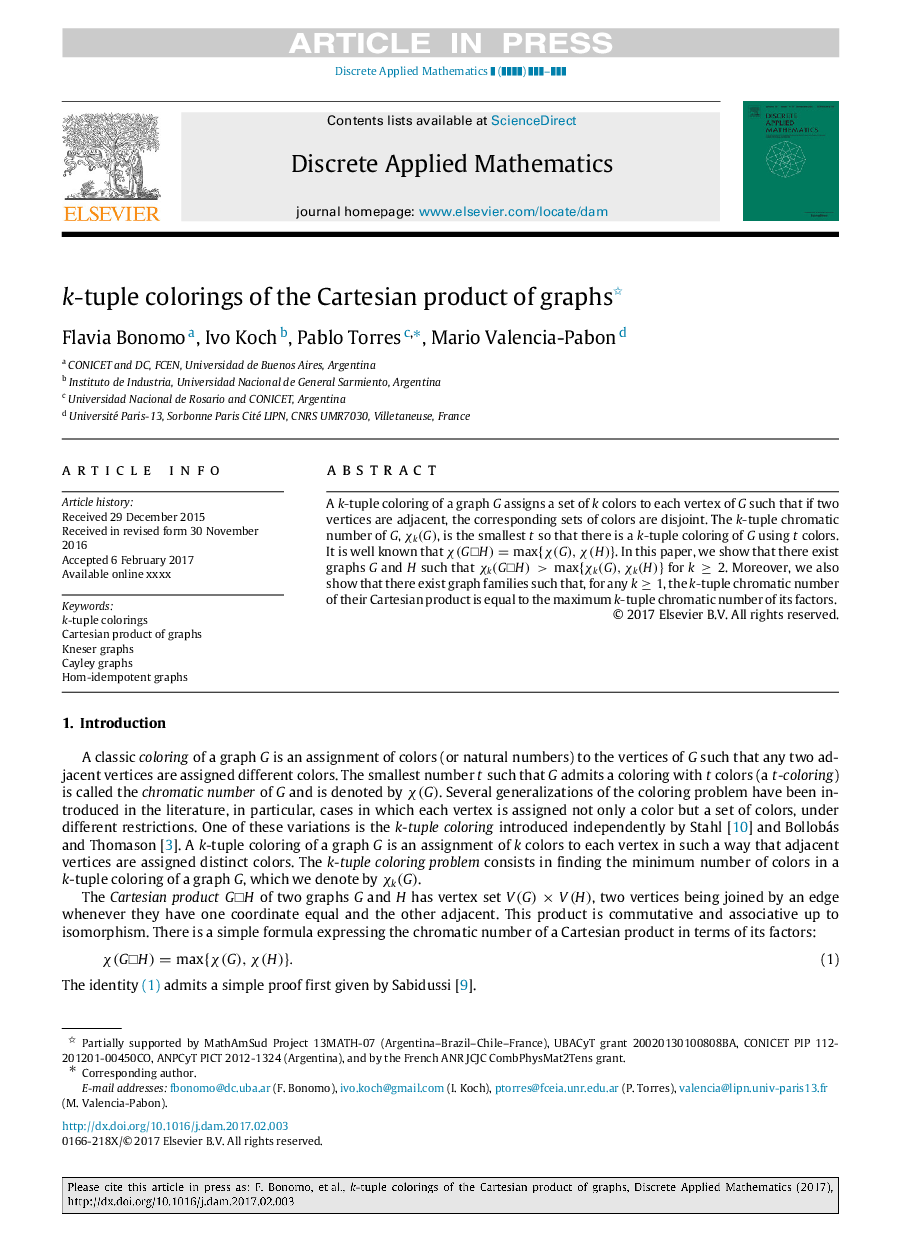| Article ID | Journal | Published Year | Pages | File Type |
|---|---|---|---|---|
| 6871134 | Discrete Applied Mathematics | 2018 | 6 Pages |
Abstract
A k-tuple coloring of a graph G assigns a set of k colors to each vertex of G such that if two vertices are adjacent, the corresponding sets of colors are disjoint. The k-tuple chromatic number of G, Ïk(G), is the smallest t so that there is a k-tuple coloring of G using t colors. It is well known that Ï(Gâ¡H)=max{Ï(G),Ï(H)}. In this paper, we show that there exist graphs G and H such that Ïk(Gâ¡H)>max{Ïk(G),Ïk(H)} for kâ¥2. Moreover, we also show that there exist graph families such that, for any kâ¥1, the k-tuple chromatic number of their Cartesian product is equal to the maximum k-tuple chromatic number of its factors.
Related Topics
Physical Sciences and Engineering
Computer Science
Computational Theory and Mathematics
Authors
Flavia Bonomo, Ivo Koch, Pablo Torres, Mario Valencia-Pabon,
